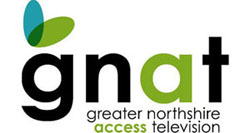Dorset water system status reviewed; upgrades needed

Andrew McKeever
GNAT-TV News Project
DORSET — The more than a century-old municipal water system that serves about 200 households in Dorset Village is back to normal operation following several restrictions imposed during the past two months, but serious problems remain, officials of the Prudential Committee which oversees the system told an audience of about 40 residents during a meeting held at the Dorset firehouse last Monday, Nov. 7.
Finding a supplemental water supply to the existing reservoir which is the main source of water to the system, finding and fixing leaks in the pipes and bringing the fire hydrants back into active service were among the steps that needed to be taken, said Ben Weiss, the chairman of the prudential committee of Dorset Fire District No. 1, which operates and manages the system.
But with a budget that totals only $51,225, other sources of financing will need to be found to carry those measures out, with a municipal bond, possibly running to more than a million dollars, being one of the options under consideration, Weiss said.
“This is most likely — it is — a multi-million dollar project to upgrade this water system,” he said. “Our budget currently has no money to construct this supplemental water system — it has no money for master planning, infrastructure improvements or staffing or consulting needs.”
The fire district had obtained a state grant of $20,000 to perform an engineering study that focused on the supplemental water supply and four sites have been identified as possible sources. Two are relatively near to the village center; one is Cutler Park and the other Prentiss Pond. The other two are on private property parcels which the district is in discussions with the landowners, Weiss said.
This year, water restrictions were imposed from Sept. 18 until Nov. 3 and an emergency boil water order was in effect from Oct. 12 until Nov. 3. Water supplies from various springs tightened, and the water level in the main reservoir dropped significantly. Last year, similar issues arose, and water restrictions were in place from Aug. 22 until Oct. 16, 2015, when water levels and supplies of water dropped precipitously during dry summer months.
But leaking pipes are also at issue here, particularly the service lines that run to individual households and businesses. These, however, are the responsibility of the private owners, not the water district, which has responsibility for maintaining the main pipelines, Weiss said as part of his presentation. Many of the service lines have reached the end of their useful lifespans, and the location of most service lines is unknown because the maps were accidentally discarded years ago. Service lines have been added on in an ad hoc manner over the years without any engineering, Weiss added.
The main lines themselves, made of cast iron pipes, are in surprisingly good shape for their age, said Jim McGinnis, the fire district’s water manager, who showed some samples of the pipes. Most of the leaks that come from the main lines are where they are joined together, he said.
“The weakest part of the main (pipelines) is its juncture where one main meets another line of pipe,” he said. “The mains may be undersized, but they are not breaking down.”
Another issue confronting the district are the unusable fire hydrants. When the hydrants and the water system were originally installed, a flow rate of between 250-500 gallons of water per minute was considered state of the art, said Abbott deRham, a member of the prudential committee. But over the years, fire trucks have evolved to use larger pipes that can handle larger volumes of water, and the smaller pipes feeding the hydrants are now obsolete, he said.
The fact that the hydrants are unusable impacts the Dorset Fire Department’s ISO rating, which assesses each fire department’s overall effectiveness and helps determine the fire insurance premiums for property owners within the fire district.
Currently, the Dorset Fire Department, as distinct from the East Dorset Fire Department, a separate entity, has a rating of 9 on a scale of 1-10; 1 being tops and 10 being the worst. The fire district’s ISO rating is 40 percent based on availability of water supply, Weiss said. The other factors are the quality of the fire department (50 percent), and communications (10 percent). East Dorset’s water system was upgraded more than 20 years ago and now enjoys an ISO rating of 4, he added.
The town’s government is ready to help the prudential committee overcome the short and longer term issues facing the water system, said Henry Chandler, the chairman of the Dorset Select Board, who attended the meeting.
“The town is ready to assist the Prudential Committee as best we can,” he said. “Ultimately, it’s the 201 hookups to the system that are responsible for bringing it up to 21st century standards. But it’s going to take time to work this through — there’s a lot of work to do.”
The short term focus will be on securing additional water supply and enhance fire fighting services, Town Manager Rob Gaiotti stated in an email following the meeting. A cost proposal is expected in the near term, he added.
Concurrently, a master infrastructure plan will highlight the best approaches to determine the costs and how those might be paid, he wrote.
“As the Prudential Committee’s presentation showed, they have made some real progress and are well on their way addressing the issues needed,” he stated in the email message to GNAT-TV.
There’s still a lot of catching up to do, however, said deRham during the meeting.
“It (the water system) has not had anything in the way of capital planning in 30 years or more,” he said. “So we’re finding a lot of things to be done.”

Andrew McKeever Photo
Jim McGinnis, Dorset’s water operator, details some of the issues facing the municipal system during a meeting Nov. 7.






